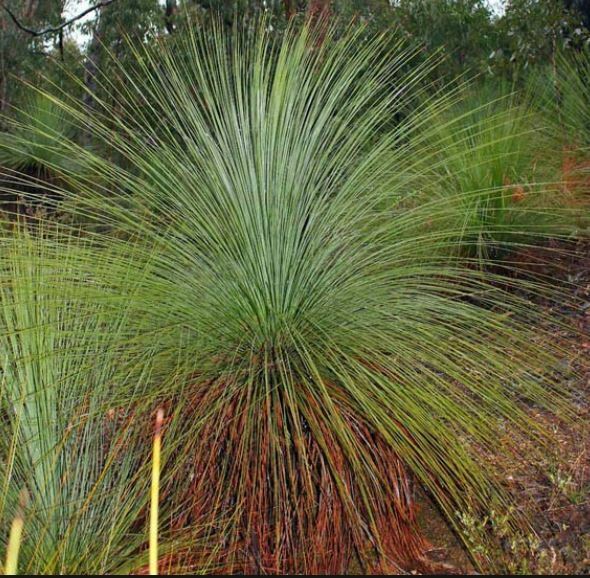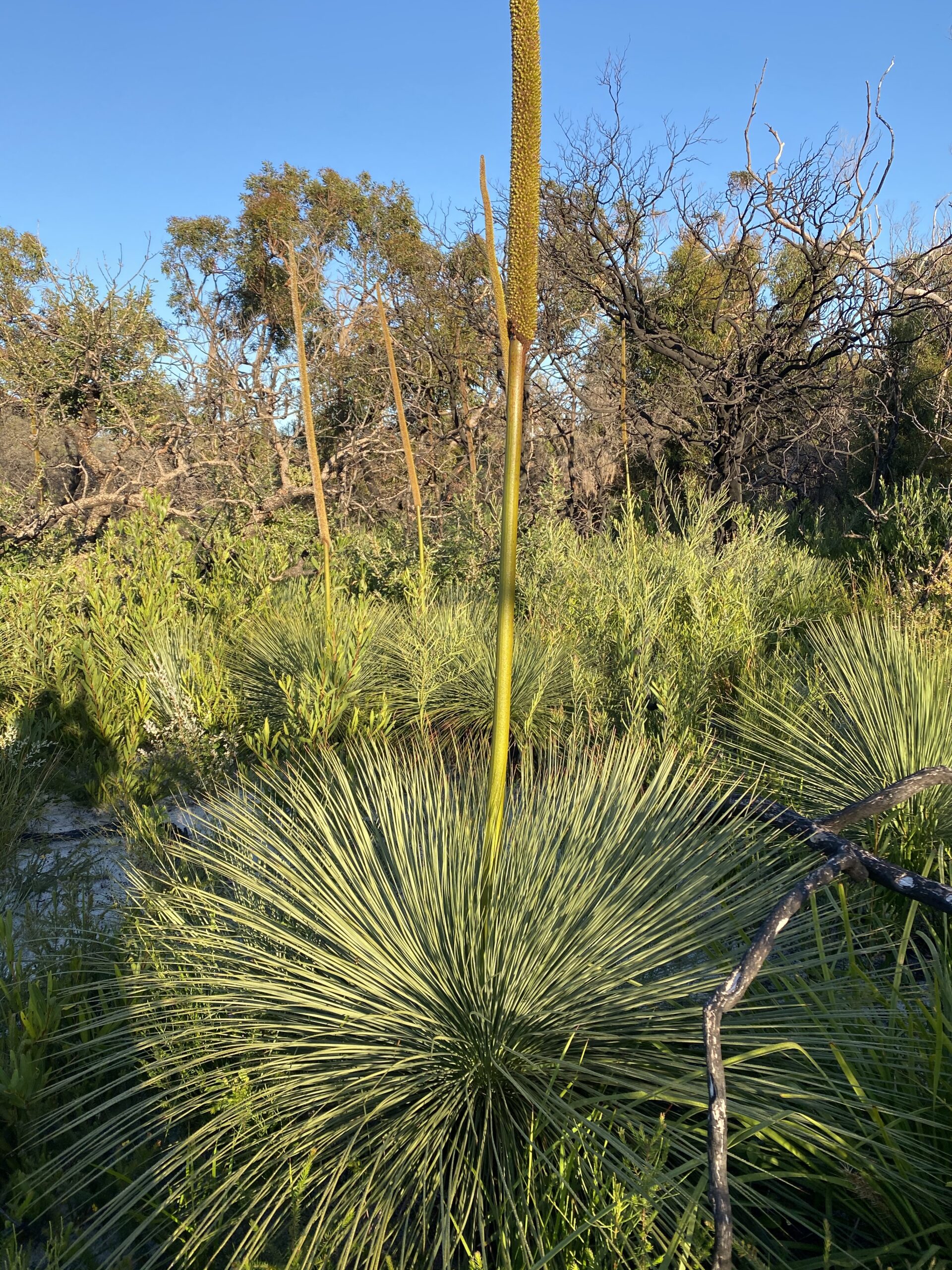
Xanthorrhoea resinosa
Common name: Grass Tree
I grow best: Drought resistant
• Full sun/ part shade
• Slow growing height up to 1m
• Well drained soils, adapts to most soils
• Flowers late winter to Spring
• Eastern Suburb Banksia Scrub
Looks like: Uniquely Australian. The trunk is slightly underground, leaves linear 3mm wide and tapering to apex, quadrangular convex shape often blue- green colour and spikey. One Flower spike velvety dark brown 1.6m long. Flowering is stimulated by fire, usually between June – January.
Habitat: Heath and woodland in sandy soils along East Coast down to Victoria, Tasmania other species are found all over Australia
Distribution:

Traditional uses: The grass tree is important to Aboriginal people across Australia. Grass trees were a ‘staple’ plant providing food, drink, fibre and materials for making implements and weapons. The white tender sections of the leaf base were eaten regularly. The seeds were collected and ground into a flour for cooking damper. Grubs were also eaten from the base (indicator to eat grubs if leaf was dying). Flower stem: You can see that the tall brown stalks could make spear shafts. The soft wood provided the base for a fire-drill in making fire. Xanthorrhoea comes from the Greek word xanthos, which means ‘to flow’ and refers to the yellow gum or resin that flows from the stem. This resin is traditionally used as glue in spear-making and in patching up water containers.

